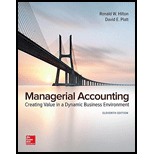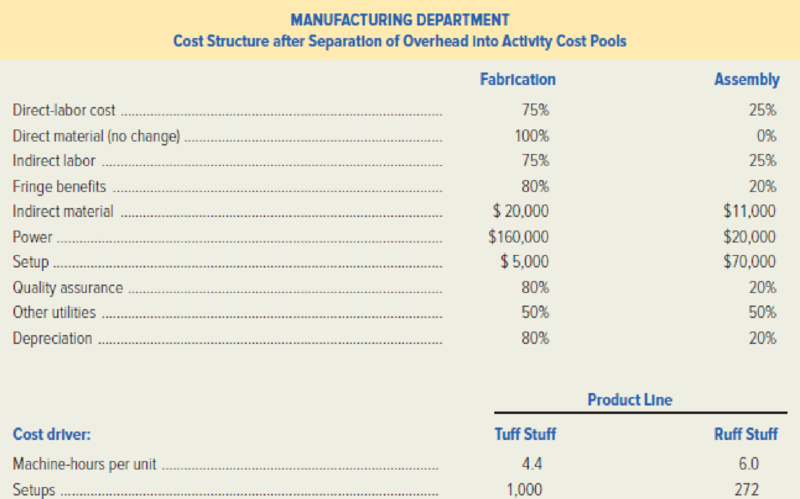
Concept explainers
Marconi Manufacturing produces two items in its Trumbull Plant: Tuff Stuff and Ruff Stuff. Since inception, Marconi has used only one manufacturing-
The two major indirect
A decision was made to separate the Manufacturing Department costs into two activity cost pools as follows:
Fabrication: machine hours will be the cost driver.
Assembly: number of setups will be the cost driver.
The controller has gathered the following information.

*Direct-labor hourly rate is the same in both departments.

Required:
- 1. Assigning overhead based on direct-labor hours, calculate the following:
- a. Total budgeted cost of the Manufacturing Department.
- b. Unit cost of Tuff Stuff and Ruff Stuff.
- 2. After separation of overhead into activity cost pools, compute the total budgeted cost of each activity: Fabrication and Assembly.
- 3. Using activity-based costing, calculate the unit costs for each product. (In computing the pool rates for the Fabrication and Assembly activity cost pools, round to the nearest cent. Then, in computing unit product costs, round to the nearest cent.)
- 4. Discuss how a decision regarding the production and pricing of Ruff Stuff will be affected by the results of your calculations in the preceding requirements.
Want to see the full answer?
Check out a sample textbook solution
Chapter 5 Solutions
Managerial Accounting: Creating Value in a Dynamic Business Environment
- ??!!!arrow_forward4 POINTSarrow_forwardSmith Corporation uses direct labor hours in its predetermined overhead rate. At the beginning of the year, the estimated direct labor hours were 24,500 hours, and the total estimated manufacturing overhead was $490,000. At the end of the year, actual direct labor hours for the year were 24,200 hours, and the actual manufacturing overhead for the year was $495,000. Overhead at the end of the year was: a. $16,500 overapplied b. $14,800 underapplied c. $11,000 underapplied d. $10,500 underappliedarrow_forward
- The Blue Jay Corporation has annual sales of $5,200, total debt of $1,500, total equity of $2,800, and a profit margin of 8 percent. What is the return on assets? a. 8.50 percent b. 10.55 percent c. 9.67 percent d. 7.89 percent e. 12.22 percent.Answer this questionarrow_forwardUnder absorption costing, the fixed overhead deferred in ending inventory?arrow_forwardAlpha Apparel Inc. Plans to sell 15,000 sweatshirts at... Please answer the financial accounting questionarrow_forward
 Cornerstones of Cost Management (Cornerstones Ser...AccountingISBN:9781305970663Author:Don R. Hansen, Maryanne M. MowenPublisher:Cengage Learning
Cornerstones of Cost Management (Cornerstones Ser...AccountingISBN:9781305970663Author:Don R. Hansen, Maryanne M. MowenPublisher:Cengage Learning
